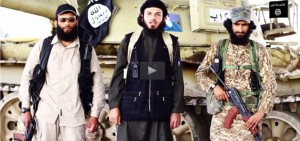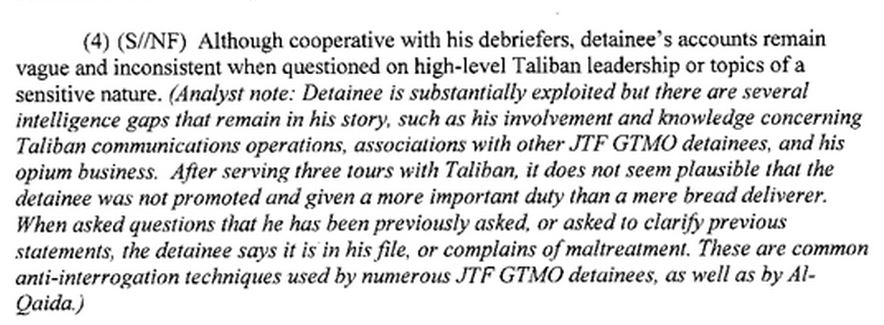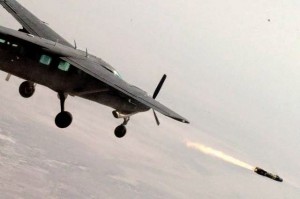US Shocked That Islamic State Capable of Military Training

From the context provided in Prothero’s article, the guy in the middle is a suicide bomber even though he looks to me more like a member of a ZZ Top tribute band.
The US has been mired in its failed training of “troops” in Iraq and Afghanistan for so long that analysts have now been watching one of the latest Islamic State videos in awe. It turns out that IS has actually managed to institute a few basic military disciplines into its troops and to capture footage of that expertise in action. McClatchy’s Mitchell Prothero talked to a number of these analysts and collected their comments. As a long-time critic of US training in Iraq and Afghanistan, I was intrigued by what the analysts would consider “good” training and how that would differ from the farces that have been perpetrated by US trainers. My cynic’s eye immediately went to this paragraph:
In several scenes that were filmed under fire, for example, Islamic State fighters moving into the Baiji refinery complex appeared to be employing textbook infantry tactics. They also were carrying not only sufficient ammunition for a military operation but also backpacks stuffed with additional supplies, including water – a sign that the Islamic State has a well oiled logistical network for supporting front-line fighters.
What a shock! Troops fighting in a desert have the foresight to enter battle with water bottles in their backpacks! Now why didn’t the US think of that in training the Iraqis?
Snark aside, though, one of the main points of the article is that IS has managed to develop a logistics network that puts the Iraqis to shame. It turns out that in Iraq (and Afghanistan, for that matter), the “government” that the US has set up is too corrupt and inept for a supply chain to work properly:
The military experts said the video provided a disconcerting comparison with Iraqi government troops. They noted, for example, that the scenes of packs filled with ammunition and food contrast with constant complaints from Iraqi troops that the government regularly fails to deliver ammunition to combat forces and often leaves them in the field to fend for themselves for food and water, a circumstance that can lead to the looting of civilian homes and shops.
It seems pretty clear that Prothero feels that the inability to deliver supplies is at least partly due to corruption. From his Twitter feed last night:
on a personal note: brave Iraqis save my life repeatedly. it’s the venal, cowardly and corrupt system I’m required to criticize for them.
— Mitchell Prothero (@mitchprothero) April 21, 2015
As for where those supplies for IS come from, I’ve seen at least one report of IS stealing and redistributing supplies from relief agencies. It seems logical that if they are doing this, those supplies would also find their way to IS fighters as well as civilians.
Prothero also notes that IS has learned to cover their heavy artillery so that it is harder to see from the air:
The video also revealed that the Islamic State appears to have adapted to American airstrikes. Most of the images of artillery, rocket launchers and even heavy anti-aircraft guns mounted on the beds of trucks include a level of camouflage designed to mask the weapons’ positions’ from the air.
Given the constant barrage of US bombs, it’s not too surprising that IS would figure out that they should hide their weapons from jets and drones. Although I’m hardly a weapons expert, one thing that stood out to me about these heavy weapons, though, was the failure to brace against recoil. It seems impossible that IS would have had any kind of accuracy in targeting with the degree of recoil seen in these weapons as shells were fired.
In the end, though, one thing stands out. This propaganda video, for all its purported slick production values and military expertise on display, covers a military operation that eventually failed in the face of those unrelenting US bombs.


